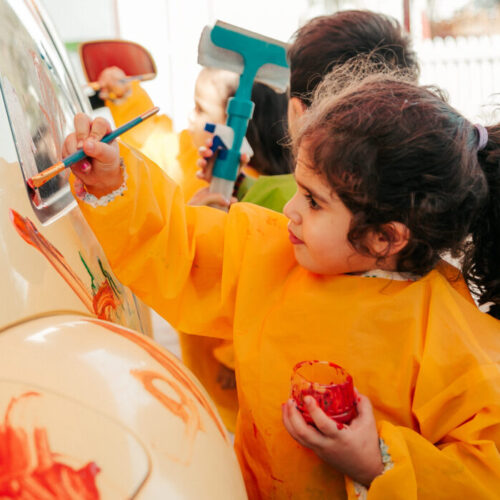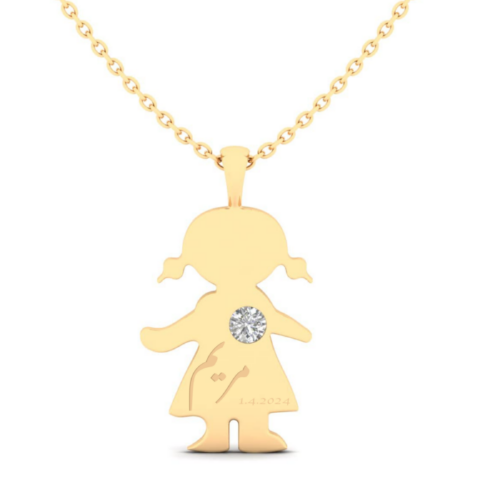Navigating worry in young children

Learn how to support and empower your child in managing their worries with expert tips from clinical psychologist, Dr Charlotte Cousins.
Worrying in little ones is a very common and a normal part of their development. In fact, worry is a sign of a healthy imagination and a developing brain. Children’s minds are sponges, absorbing and trying to make sense of all the information they are exposed to every day. As kids process this information, their imagination can take them to some very weird and wonderful places, not all of which can be helpful, and some of which may even be scary for them.
Is it a phase?
You might be wondering whether or not this is a phase. For many children, it will be something they simply ‘grow out of’ or learn how to manage. However, for some little ones, the worry will stick around and they may need some professional support to learn how best to manage their worry.
How to help
Here, we will look at some great tips that you can implement into your everyday parenting that will reassure your child and help them to manage their anxieties.
Listen to their worries
A lot of people think that listening to their child’s worries gives life to them and makes the worry worse. As a result, we often hear phrases like ‘don’t be silly’ or ‘there’s nothing to worry about’. While these throwaway sentences seem normal and casual, they can actually result in children thinking that they are silly, that they shouldn’t feel this way and that there is something wrong with them. This can often mean that kids are less likely to share their worries and seek support from an adult or parent for problems in the future. The reality is that the worries are present for your child, whether they talk about them or not. As a parent, the aim is to show your child that you are here to listen, to help and advise them on how to respond to their worry.
Acknowledge their feelings
Whilst listening to your little one’s worries, it’s good to name and acknowledge the feelings your child is experiencing. This helps them learn to identify and name their feelings for themselves, which goes a long way in managing all emotions, worry included. If you aren’t sure what the feelings are, that’s okay – you aren’t a mind reader after all! However, do always give it your best guess. This might look like “Thank you for sharing that worry with me. I can see that the darkness in your bedroom at night is making you feel really scared” or “I can see that this worry about your friend not inviting you to their party is making you feel stressed”. You can also try “I can see that this worry is really affecting you, is it making you feel upset?”
Externalise the worry
Externalising the worry means locating the worry outside of your child. This can be a powerful parental tool to deconstruct the source of your little one’s anxiety or sadness. Locating the worry outside of your child teaches them that the worry is something that they experience but it is not actually a part of them as a person. It’s always important to help kids see that the worry is the problem, they are not the problem. This allows them to feel more able to tackle the worry, as they don’t see it as an intrinsic part of themselves.
Feel free to get creative with the approach you take to externalising. Get your child involved and ask them to use their imagination. Ask them to describe the worry – is it an animal? A person? A character from a film? What qualities does it possess?
Here are some examples of ways of externalising:
- The worry monster – he comes in uninvited and stomps all over my brain
- Steve the worry snake – he silently slithers into my thoughts
- Walter the angry wolf – he howls so loudly that I can’t hear myself think.
Get to know the worry
Once you have externalised the worry and found a way of referring to it that feels like a good fit for your child, ask your little one some questions to help you better understand the worry. You want to find out what makes the worry appear, what makes it worse and what makes it better. This will help you identify how best to respond to the worry. Don’t be afraid to be silly and playful with this approach, it can really help to lighten the mood and reduce the level of fear for your child.
Here are some examples of questions you can ask:
- What makes the worry monster appear?
- What makes Walter the angry wolf howl so loudly?
- Does anything quieten him down and stop him howling so loudly?
- When does Steve the snake tend to appear?
- Have there been any times that you have been able to make Steve slither away again?
When getting to know the worry, we are looking for ‘exceptions to the rule’. This means discovering the times that your child has been able to overcome their worry, along with how they were able to do this.
Team up
Once you have got to know the worry, team up with your child and help them ‘fight’ against the worry. Again, get creative, engage their imagination and use phrases such as ‘I am going to be your sidekick in our quest to quieten down Walter the wolf’ or ‘let’s become worry warriors and battle against the worry monster together’.
Draw upon the information you gathered in the last step by focusing on what causes the worry and what makes it worse. It can also be good to have a think about whether there’s anything you can put in place to prevent the worry from growing, or even to help it go away once it has appeared. Again, use the power of your child’s imagination, as when kids come up with an idea or approach themselves, it is much more likely to be effective.
Here are some examples:
- An invisible cloak that acts as a repellent to the worry monster. For children that worry a lot at night, you can include putting on the cloak as part of the process of getting ready for bed.
- Drawing a heart on your child’s hand and your hand, holding them together to fill them both up with love so that your child can still feel your love when you are apart. This works particularly well for children that feel worried when they are away from a parent.
- Get your child to imagine picking up a remote control, pointing it at Walter the wolf and turning down the volume of his howl.
Additional support
If you notice that your child has been worrying consistently for a prolonged period of time, that it causes them considerable distress and that their worries are having a significant impact on multiple areas of their life, such as at home, with friends and at school, it may be time to investigate the benefits of psychological therapy. At Sage Clinics, where Dr Charlotte Cousins leads the Children and Adolescent Services, there is a range of highly skilled psychologists that offer evidence-based therapy for children who struggle with worries. Visit their website at www.sage-clinics.com for more information or to ask for advice for your little one.
Image Credit: ShutterStock











Comments